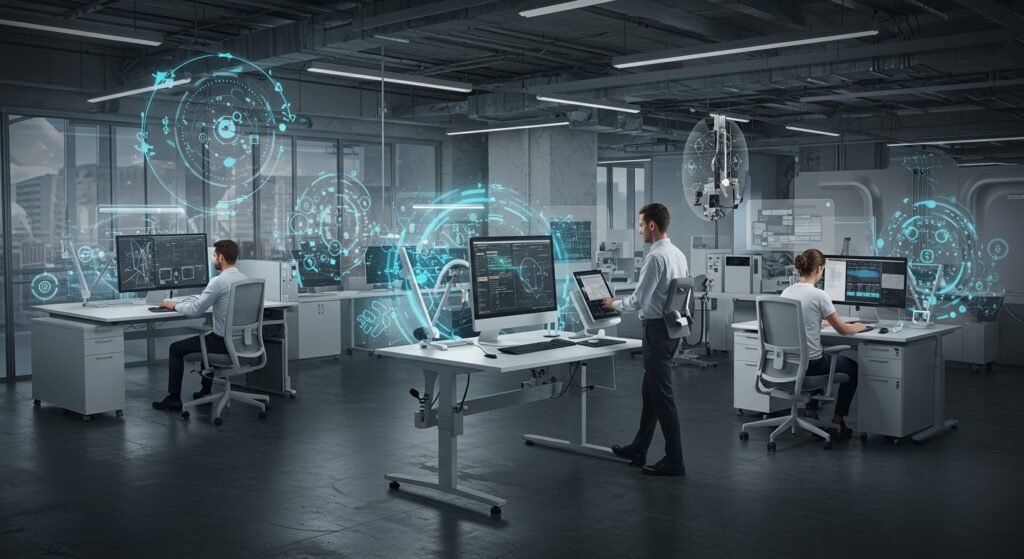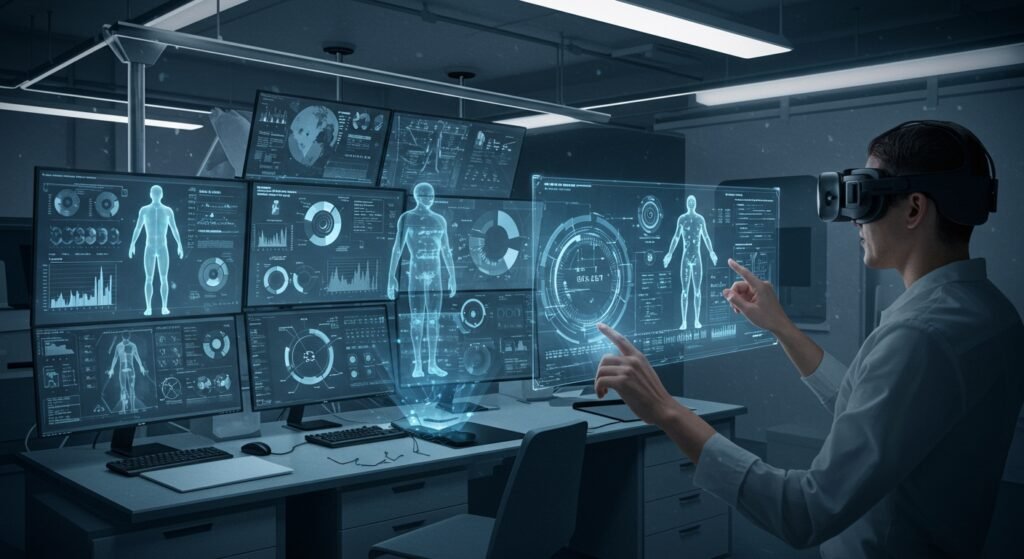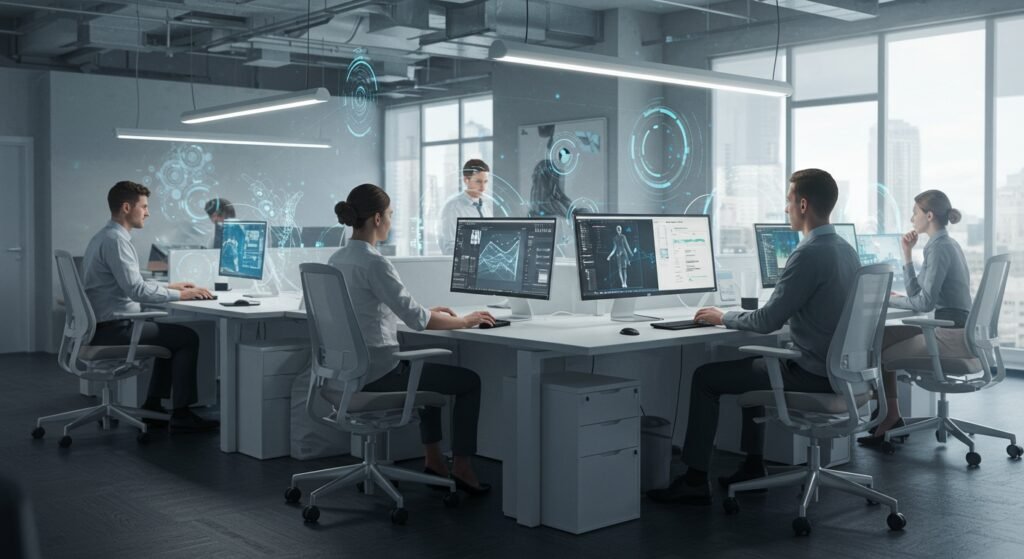New Frontiers in Ergonomics: Reshaping the Modern Workplace
The landscape of work is constantly evolving, and at its core, the science of ergonomics plays a pivotal role in ensuring that human capabilities and well-being are prioritized. As we delve into the New Frontiers in Ergonomics, we discover innovations that are not just about adjustable chairs but about creating integrated, adaptive, and intelligent work environments. This article explores the cutting-edge developments that are redefining how we interact with our workspaces, from smart furniture to AI-driven solutions, all aimed at enhancing productivity and mitigating physical and mental strain.
Table of Contents
- Beyond the Basics: Redefining Ergonomics
- The Rise of Smart Ergonomics and AI Integration
- Wearable Technology for Real-time Feedback
- Cognitive Ergonomics in the Digital Age
- Sustainability and Ergonomics
- The Challenge of Hybrid Work
- Impact on Industrial Engineering and Beyond
- Future Outlook: A Truly Human-Centric Design
Beyond the Basics: Redefining Ergonomics
For decades, ergonomics focused primarily on physical comfort and safety, addressing issues like repetitive strain injuries and proper seating. While these fundamentals remain crucial, the New Frontiers in Ergonomics extend far beyond, incorporating aspects of cognitive psychology, data analytics, and artificial intelligence. The goal is no longer just to prevent injury but to optimize performance, foster well-being, and create environments that intuitively adapt to individual needs. This holistic approach considers both the physical and mental demands placed on workers in an increasingly complex and digital world.
The Rise of Smart Ergonomics and AI Integration
One of the most exciting developments is the integration of smart technology and artificial intelligence into ergonomic design. These innovations are transforming static environments into dynamic, responsive spaces.
Adaptive Workstations and IoT
Imagine a desk that automatically adjusts its height based on your activity, or lighting that changes to match your circadian rhythm. Internet of Things (IoT) devices are making this a reality. Smart workstations can collect data on usage patterns, posture, and even ambient conditions, providing personalized recommendations and adjustments. This proactive approach helps prevent discomfort before it arises, enhancing focus and reducing fatigue. For more insights into smart office tech, you might find this article on the future of smart offices insightful.
AI-Powered Posture Correction
AI algorithms, often paired with computer vision, can monitor an individual’s posture in real-time and provide immediate feedback or gentle reminders to adjust. This goes beyond simple sensors, using machine learning to understand complex bodily movements and identify problematic patterns over time. This personalized coaching helps cultivate better habits and significantly reduces the risk of musculoskeletal disorders.
Wearable Technology for Real-time Feedback
Wearable devices are no longer just for fitness tracking. In ergonomic contexts, they offer invaluable data on movement, stress levels, and environmental exposure. Smart garments or sensors can track heart rate variability, skin temperature, and even muscle activity, providing workers and safety managers with real-time insights into potential stressors or risks. This allows for immediate interventions and personalized adjustments to tasks or environments, proving beneficial for roles in both office and demanding industrial settings.
Cognitive Ergonomics in the Digital Age
As work becomes increasingly knowledge-based, cognitive ergonomics gains prominence. This field addresses mental workload, decision-making, and user experience with digital interfaces. Designing software, dashboards, and virtual reality environments to minimize cognitive load, reduce errors, and enhance comprehension is paramount. Eye-tracking technology and cognitive load assessment tools are becoming integral in optimizing digital workflows and ensuring that technology truly aids, rather than overwhelms, the human operator. This is a crucial aspect of modern industrial engineering practices.
Sustainability and Ergonomics
The intersection of ergonomics and sustainability is another emerging frontier. This involves designing work environments and products that are not only comfortable and efficient but also environmentally responsible. Using sustainable materials, optimizing energy consumption in smart offices, and designing products for longevity and recyclability are becoming key considerations. This eco-conscious approach aligns with broader corporate social responsibility goals while still prioritizing human well-being.
The Challenge of Hybrid Work
The rise of hybrid and remote work models presents unique ergonomic challenges. How do organizations ensure ergonomic health when employees are working from diverse, often suboptimal, home environments? This frontier explores solutions like virtual ergonomic assessments, providing employees with stipends for ergonomic equipment, and developing flexible, modular furniture solutions that can adapt to various home office setups. The goal is to extend the benefits of ergonomic design beyond the traditional office walls.
Impact on Industrial Engineering and Beyond
The principles of New Frontiers in Ergonomics are deeply impacting industrial engineering, leading to smarter factory layouts, more intuitive human-robot collaboration, and advanced safety protocols. Beyond traditional manufacturing, these trends are influencing healthcare, transportation, and even entertainment, where user experience and physical comfort are paramount. The focus keyword “New Frontiers in Ergonomics” perfectly encapsulates this widespread influence and the exciting developments across various sectors.
Here’s a comparison of traditional vs. modern ergonomic approaches:
| Feature | Traditional Ergonomics | New Frontiers in Ergonomics |
|---|---|---|
| Focus | Injury Prevention, Physical Comfort | Holistic Well-being, Performance Optimization, Cognitive Load, Adaptability |
| Technology | Basic Adjustments (e.g., chair height) | IoT, AI, Wearables, Data Analytics, VR/AR |
| Approach | Reactive, Static Solutions | Proactive, Adaptive, Personalized Solutions |
| Scope | Individual Workstation | Integrated Work Environment, Hybrid Models |
| Key Driver | Compliance, Safety | Productivity, Well-being, Innovation, Sustainability |
For more detailed information on ergonomic standards and best practices, consider visiting the official OSHA Ergonomics Guidelines.
Future Outlook: A Truly Human-Centric Design
The journey into the New Frontiers in Ergonomics is an exciting one, promising work environments that are not just safe and comfortable but truly empowering. As technology advances, the focus will increasingly shift towards predictive and personalized ergonomic solutions that anticipate needs and adapt seamlessly. This commitment to human-centric design will be crucial in shaping the future of work, ensuring that productivity and well-being go hand-in-hand.


